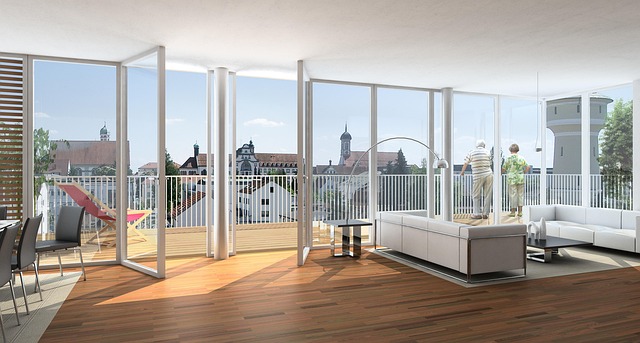Topographical representation and 3D terrain modeling are vital tools for building design modeling, providing precise maps and detailed views of land and terrain. By integrating digital tools like LiDAR scanning, architects and engineers can make informed decisions about building placement, understand site challenges, and create innovative, contextually-aware designs. These models enable comprehensive assessments, impact visualization, and scenario simulations before construction begins, streamlining planning stages and enhancing collaboration throughout the process.
“Unleashing the power of accurate topographical representation in building design, 3D terrain modeling is transforming the way we create and visualize spaces. This innovative approach offers a precise digital twin of landscapes, crucial for informed decision-making. By understanding the significance of topographical data, this article explores the pivotal role of 3D terrain modeling in achieving unprecedented accuracy. We’ll delve into key techniques, powerful tools, and integration strategies, showcasing how this technology enhances building design workflows and opens doors to new creative possibilities.”
Understanding Topographical Representation and its Significance in Building Design
Topographical representation is a critical aspect of building design, providing detailed maps that illustrate the three-dimensional characteristics of land and terrain. This precise depiction includes elevation, slopes, contours, and natural features like rivers and valleys. For architects and engineers, having an accurate topographical model allows for informed decision-making during the design phase. It enables them to assess site suitability, understand potential challenges, and optimize building placement and orientation for maximum efficiency and functionality.
In building design modeling, 3D terrain modeling plays a pivotal role in achieving this level of detail and accuracy. It offers a comprehensive view of the landscape, enabling designers to integrate natural elements seamlessly into their plans. With digital tools, these models can be manipulated, analyzed, and visualized from various angles, fostering innovative and contextually aware design solutions.
The Role of 3D Terrain Modeling in Achieving Precision
In the realm of accurate topographical representation, 3D terrain modeling emerges as a game-changer. This advanced technology goes beyond traditional 2D maps by providing a comprehensive and precise digital landscape. By capturing intricate details such as elevation changes, landforms, and natural features, 3D models offer a holistic view of an area’s topography. This level of detail is paramount in various fields, including urban planning, environmental studies, and building design modeling.
The precision afforded by 3D terrain modeling ensures that decisions made based on these models are well-informed and reliable. For instance, architects and engineers can use these models to assess site feasibility, visualize potential construction impacts, and even simulate natural phenomena like water flow. This not only enhances the accuracy of projects but also fosters innovation in building design modeling by enabling professionals to consider multiple scenarios before breaking ground.
Key Techniques and Tools for Effective 3D Terrain Modeling
In the realm of accurate topographical representation, 3D terrain modeling stands as a game changer. The process involves sophisticated techniques and tools to translate real-world landscapes into digital formats, enabling detailed analysis and visualization. Key methods include LiDAR (Light Detection and Ranging) scanning, which uses laser pulses to capture intricate terrain details with remarkable precision. This data is then processed using specialized software to create 3D models, ensuring every bump and contour is accurately represented.
Building design modeling plays a crucial role in this process. Advanced CAD (Computer-Aided Design) software allows for the seamless integration of topographical data into digital building designs. This synergistic relationship enhances spatial planning, infrastructure development, and environmental assessments by providing a holistic view of the terrain’s potential. Furthermore, real-time rendering capabilities enable architects and urban planners to virtually explore and manipulate 3D terrain models, fostering innovative design solutions tailored to specific geographical challenges.
Integrating 3D Terrain Models into Building Design Workflows
Integrating 3D terrain models into building design workflows has become an indispensable tool for architects and urban planners, revolutionizing how we conceptualize and create built environments. This advanced technology offers a detailed, accurate representation of landscapes, enabling designers to make informed decisions from the initial planning stages. With 3D terrain modeling, builders can visualize the entire site, including topographical variations, slopes, and existing structures, all in a virtual space.
This innovative approach streamlines building design processes by providing a comprehensive view of the territory. Architects can efficiently analyze the site’s constraints and opportunities, ensuring optimal use of space. Moreover, 3D terrain models facilitate better spatial understanding, allowing designers to communicate their vision more effectively to stakeholders and clients. The result is enhanced collaboration and precision throughout the construction process.
3D terrain modeling has emerged as a game-changer in the realm of building design, offering unprecedented precision and detail for topographical representation. By integrating advanced techniques and tools, architects and designers can now create intricate 3D models that accurately depict landforms, elevation changes, and natural features. This enhances the overall quality of design projects, enabling more informed decision-making and improved visualization. Adopting 3D terrain modeling into building design workflows is not just a trend; it’s a step towards a future where design and reality are seamlessly aligned, fostering innovative and sustainable construction practices.
